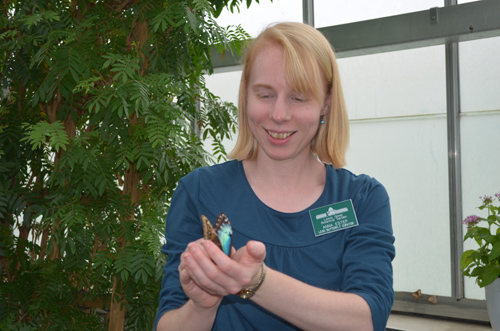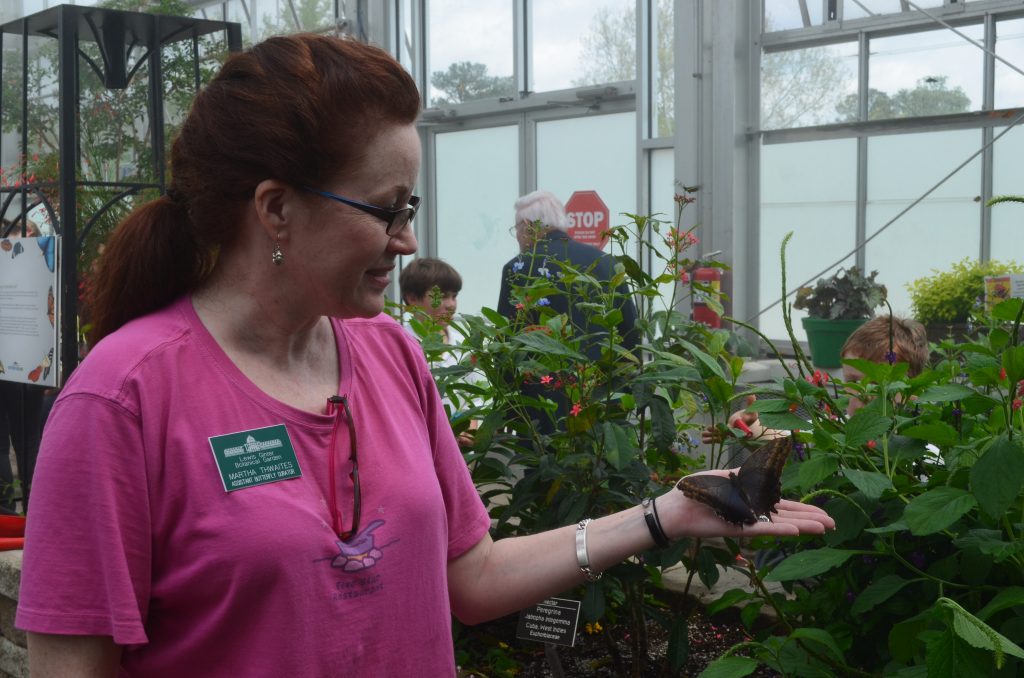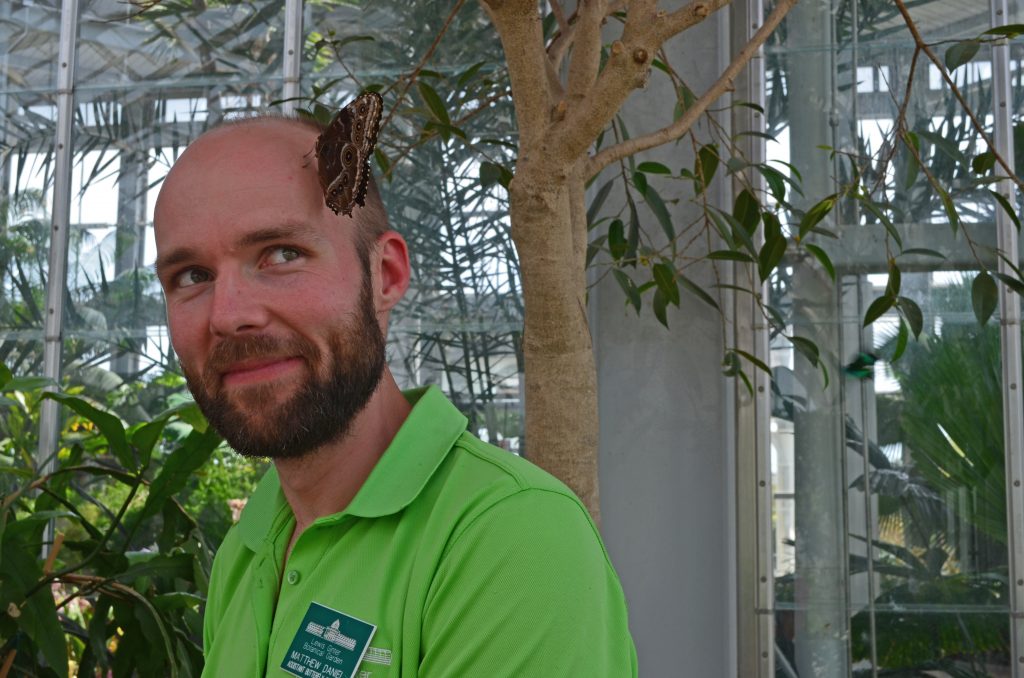The Butterfly Keepers
We have a saying at the Garden: “Folks always smile and say Hello, but may not know names.”
The phrase comes in a daily email sent by our Garden Cafe staff, announcing not only the daily special, but introducing who’s working the line and the register in the cafe. It’s created a culture of encouraging everyone who works here, from volunteers, to contractors, to partnering organizations, to always introduce ourselves if we don’t know someone. So we’re taking that idea another level and introducing you to our five amazing butterfly curators who you are likely to meet in our Butterflies LIVE! exhibit. Each shares a passion to educate, learn and make people feel welcome. So next time you smile and say hello to our butterfly curators, you’ll know their names and a little bit about each. When you visit, go ahead an introduce yourself, you might just learn something about butterflies and make a new friend.
Anna Estep – Lead Butterfly Curator
Question: What question do you get asked the most?
Answer: How long do butterflies live?
Q: So, how long do butterflies live?
A: Two to six weeks, depending on the type. Typically, they live longer in the exhibit than in the wild because we don’t have predators, like birds in here.
Q: What do you like most about being a curator?
A: I like the education. I like seeing people’s face light up when something they aren’t familiar with begins to make sense to them.
Q: What do you like most about working in a field that incorporates biology?
A: I like interacting with animals and the environment. I feel it is our duty to take care of what we’ve been giving and use it wisely, while learning and teaching what we need to know.
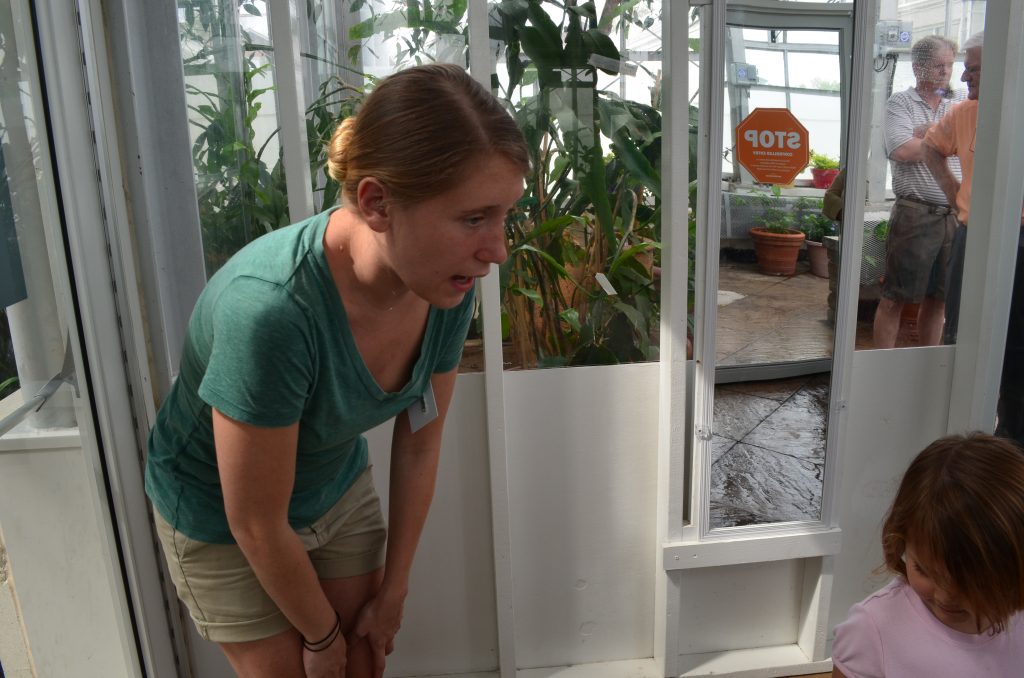
Assistant butterfly curator, Kelsey Deans, giving two little girls instructions before entering the Butterflies LIVE! exhibit.
Kelsey Deans – Assistant Butterfly Curator
Question: What questions do you get asked the most?
Answer: How many butterflies are in the exhibit?
Q: So how many are there?
A: By the end of the exhibit we’ll have had a total of 8,000 butterflies. On a daily basis we have roughly 1,000 in the exhibit.
Q: What do you like most about being a butterfly curator?
A: My favorite part would have to be the learning aspect and working with one specific animal allows you to learn more and go into depth.
Q: What have you learned since starting the position?
A: Butterflies are species specific. Some of the butterflies can hear while others can not.
Martha Thwaits – Assistant Butterfly Curator
Question: What question do you get asked the most?
Answer: How can I get a butterfly to land on me?
Q: So can you tell us how to get a butterfly to land on you?
A: Sometimes you can stand still. But ultimately they fly and land where they want to.
Q: What do you like most about being a curator?
A: I love learning about all the different varieties of butterflies and learning about non-native butterflies that we wouldn’t see in our own country. I love tending to the butterfly nursery where we take care of the chrysalis as well.
Matthew Daniel – Assistant Butterfly Curator
Question: What do visitor ask you the most?
A: How many butterflies are in the exhibit? [See the answer above]
Q: What do you like most about being a butterfly curator?
A: I like working with the people. Everyone that comes through here is happy.
Q: What trait do you poses that is similar to a butterfly?
A: Spontaneity! I like to get easily distracted.
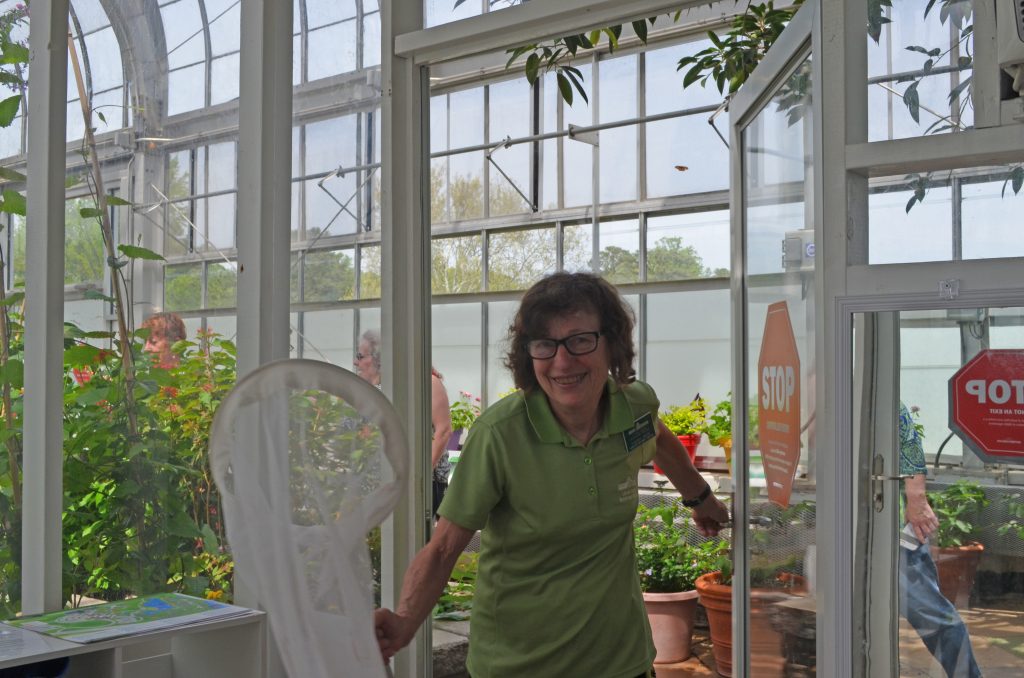
Sherry Giese enjoys people and is happy to tell visitors a few tips in the vestibule before they enter the exhibit.
Sherry Giese – Assistant Butterfly Curator
Q: What question are you asked the most?
A: We’re asked about some of the plants in the exhibit. Particularly, the jaboticaba (Plinia cauliflora), a Brazilian tree that grows fruit on its trunk.
Q: What do you like most about being a butterfly curator?
A: It’s a joy to watch kids react to the butterflies.
Q: What trait do you possess that’s similar to a butterfly?
A: Free-spirited! And I hope I make people as happy as the butterflies do.
